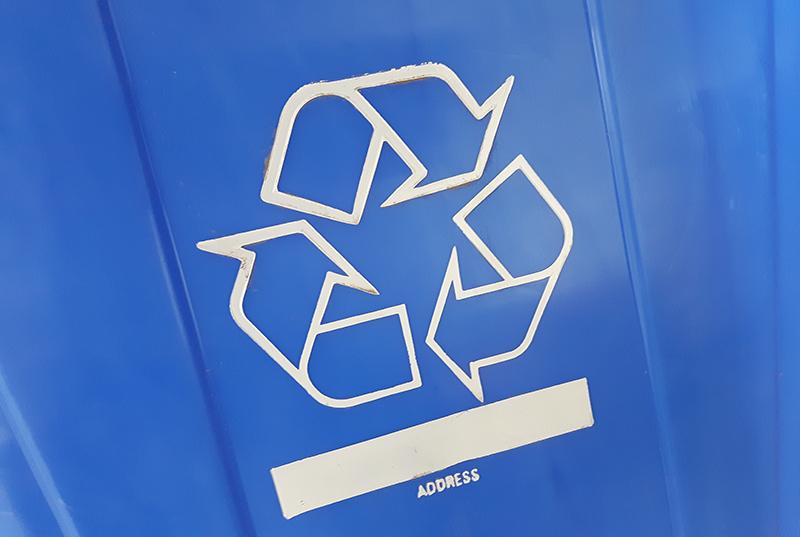Every week, we have grown used to placing our full recycling boxes at the curb, along with our garbage, and we expect that recyclables and garbage, will be collected by the end of the day. That won’t change.
But the continuing mission to reduce waste and divert waste from local landfill sites, continues.
New legislation introduced in November 2016 will see more of a burden placed on manufacturers and producers to reduce packaging or pay more for the costs incurred by what their products add to the waste stream.
An example of this might be that bins to accept household hazardous waste might become the norm at hardware stores and garages.
Bins to accept recyclables (like paper) and bins to accept e-waste might be set up at the mega-stores which sell these products.
The solution to reducing waste will take time, says Robert Lefebvre, who is the Recycling Coordinator of the Joint Recycling Committee, which manages recycling and household hazardous waste collection for the Town of Hawkesbury, Champlain Township and the Township of East Hawkesbury.
The Joint Recycling Committee reports that the total tonnage for e-waste collected by Recycle Action between January and July 2017 is slightly lower from the previous year, and also indicated that the tonnage collected from the blue box program was also down three per cent in 2017 when compared to last year. But this doesn’t mean less was collected, says Lefebvre.
“Plastics and other items are getting lighter, so we may still have the same or more volume; it just weighs less,” he said.
Overall, 20 to 21 per cent of waste is diverted from landfill, when one takes into account recycling, bottle return, e-waste, household hazardous waste and other diversion systems, like tire returns.
But government targets, going forward, are lofty, says Lefebvre. What has to be determined is how to get there.
A few big issues will have to be addressed. One is: organic waste. That constitutes about 40 per cent of what we are throwing in the garbage and that, ultimately, makes its way to landfill sites, where it is creating gas emissions.
Source recovery, or looking to big corporations to provide the means for the waste from their products to be diverted from municipal collection systems and ultimately, from landfill sites, is another challenge– a new system will take time to implement.
At the current rate of waste being dumped in landfills, 16 new landfill sites would be on Ontario’s horizon and that is something which is simply not realistic, says Lefebvre.
Common questions
How much garbage does the average person produce per year?
The per capita average is 800 kilos, or 1,760 pounds of garbage, which goes to landfill sites every year.
Why don’t household hazardous waste (HHW) days take place more than twice per year?
The cost of one HHW day is $45,000, Lefebvre says. Between 35 and 40 tonnes of HHW is collected. Provincial grant funds of about $30,000 offset the cost, but the balance is picked up by the Joint Recycling Committee, which ultimately apportions the cost to the three municipalities under its purview.
This year’s autumn HHW event takes place on Saturday, October 7 at the Hawkesbury Wastewater Treatment facility between 8:30 a.m. and 2 p.m. Students from École secondaire régionale de Hawkesbury will be on hand to assist and in exchange for their time, a $1,500 donation will be made to the school by DrainAll, the company hired to handle the HHW sorting and removal.
Two HHW collection days take place per year in Hawkesbury, serving about 11,500 households.
How many of us drop items off during HHW days?
In October 2016, only five per cent of Hawkesbury householders dropped off items at the October HHW event. Only 3.6 per cent of East Hawkesbury householders had items to dispose of but Champlain Township, with six per cent of its householders bringing household hazardous waste items for disposal, had the best participation rate.
Should I sort my recyclables before putting them in my blue box?
No need to sort your bottles and cans. All recyclables are sorted at the depot by Recycle Action, which uses staff from Groupe Convex for sorting recyclables. Groupe Convex is a not-for-profit group in Hawkesbury. A note containing in the Joint Recycling Committee minutes notes that Groupe Convexe anticipates annual increased labour costs from between $300,000 and $400,000 for all of its operations when minimum wage increases come into effect. In terms of its contract with the Joint Recycling Committee, Recycle Action indicated that its portion of these labour costs will be about $74,000 per year.
Should I wash my recyclables?
It isn’t necessary to wash your recyclable items, although it is nicer not to have food and leftovers in your recyclable containers.
Are businesses part of the local recycling program?
Not yet. Businesses are on their own when it comes to diverting waste from the landfill stream.
To see a complete list of what you can drop off at the HHW day on October 7, watch for large ads in upcoming editions of The Review. As part of the Ontario Community Newspaper Association Waste Stewardship program, newsprint volume used by The Review and other member newspapers is calculated province wide. A further calculation is done for our region and and in-kind free advertising is provided by The Review to the municipalities we serve to promote recycling, e-waste collection and household hazardous waste collection days.


